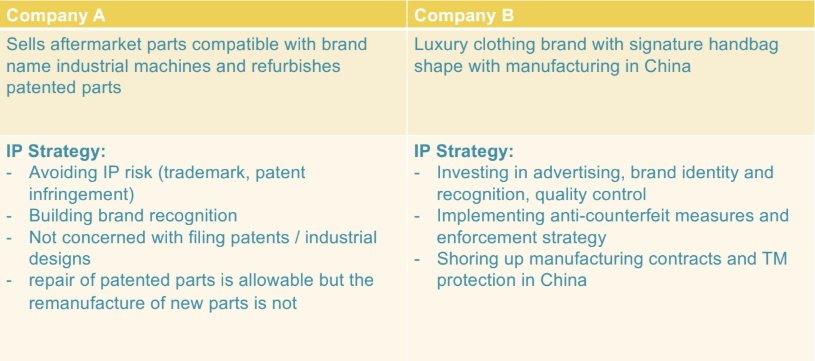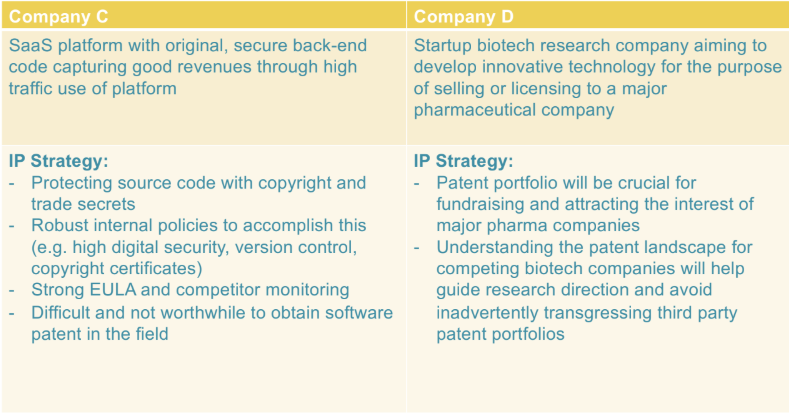On December 4th, we had Patrick Smith and Emilie Feil-Fraser from Seastone IP share some great insights and examples of different IP Strategies and considerations for businesses.
Here are some key takeaways:
Patent Filing
- Adjust your pace depending on your goals and resources.
- Delaying:
- To better spread out cost
- Give you more time to validate the market.
- Decide which additional jurisdictions to file in
- Speed it up:
- If you wish to pursue litigation against a potential infringement.
- So that you can license it out to a potential partner.
- To align with fundraising timelines in order to better justify valuation.
- Delaying:
- Patent agent may be good at getting patents, but not as experienced with litigation. Might be worth giving your draft to a litigator to get their thoughts on defensibility.
Risk/Infringement
- Not only for defensibility sake – to prevent others from copying. But also identifying and understanding risks to minimize accidentally infringing on others and positioning yourself as a potential target for litigation.
- Refurbishing or repairing a patented product may also get you in trouble. It might be considered remanufacturing depending on the scope.
- How can I monitor competitors’ IP filings to stay ahead of industry trends?
- There exist specific tools/programs for these.
- Or you can instruct your IP agent/firm to monitor IP filings from certain companies (with a charge).
Copyright
Using AI generated code may affect copyright defensibility of code since ownership is ambiguous.
Trademark
Did you know that “Bluetooth” is a trademarked brand? The technology itself is patented; however, Bluetooth Special Interest Group was very intentional with the word mark, figure mark, and combination mark for their technology. This strategic and intentional approach was foundational to how they developed licensing partnerships and recognition of their technology.
Example IP Strategies
IP Strategy isn’t only about patenting, as you can see from the examples below


IP Strategy depends heavily on Business Strategy, which are influenced by your offerings, markets, competitors, and even exit plan.


